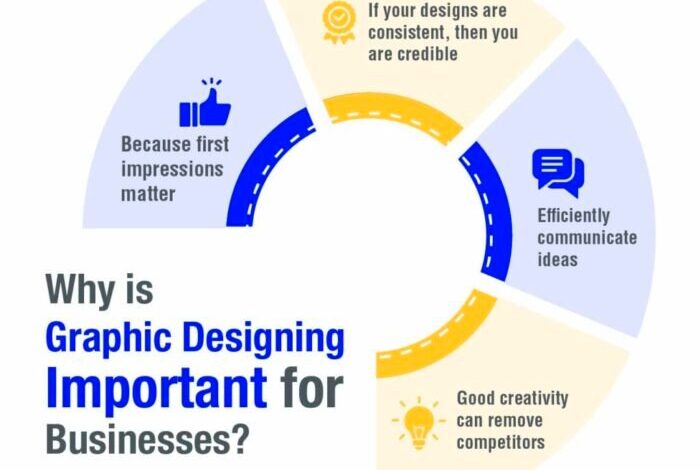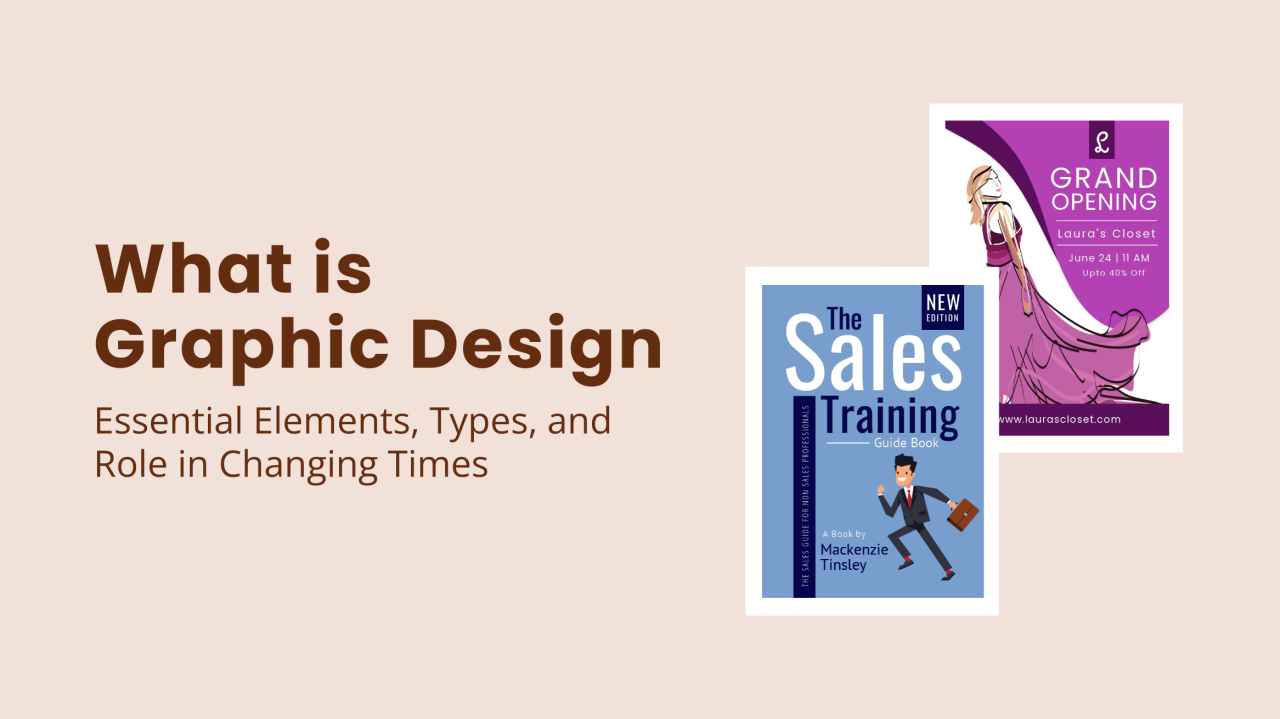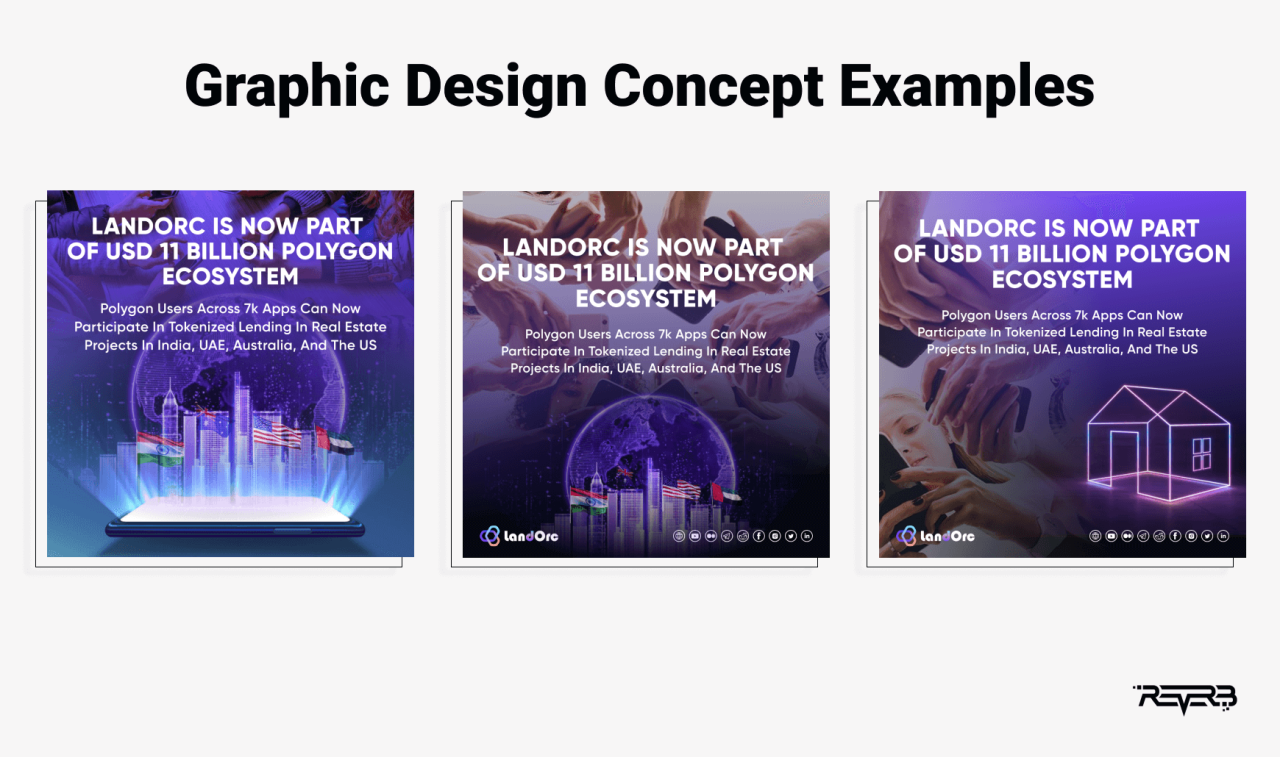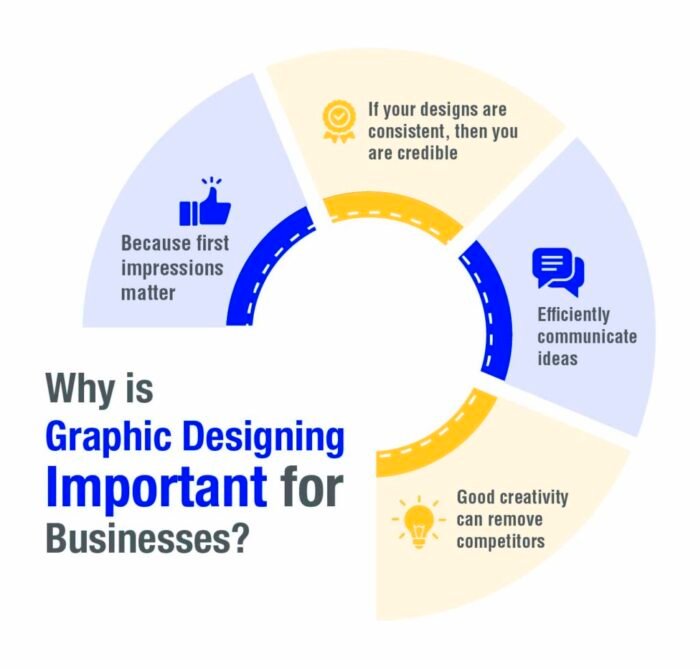
Define Success With Graphic Design
Define success with graphic design—it’s a question every designer grapples with. Is it about racking up client testimonials, landing a feature in a top design magazine, or something more? This isn’t just about pretty pictures; it’s about understanding the impact your work has, both creatively and commercially. We’ll dive into the metrics, the client relationships, the innovative leaps, and the personal growth that define a truly successful graphic design career.
This post explores how we measure success beyond just the aesthetics. We’ll look at quantifiable metrics, client satisfaction, the role of creativity, and the importance of continuous learning and adaptation in this ever-evolving field. We’ll also examine how successful design directly contributes to a business’s bottom line, showcasing the powerful connection between creativity and tangible results. Get ready to redefine what success means to
-you* as a graphic designer.
Defining Success Metrics in Graphic Design
Defining success in graphic design isn’t simply about creating aesthetically pleasing visuals. It’s about understanding how those visuals contribute to a client’s overall goals and measuring their impact. This requires a multi-faceted approach, combining both qualitative and quantitative measures to paint a complete picture of a project’s effectiveness. While subjective opinions are valuable, quantifiable data provides a crucial objective benchmark.
Quantifiable Metrics for Graphic Design Success
Understanding the effectiveness of a graphic design project necessitates the use of quantifiable metrics. These metrics offer a clear and objective way to assess the project’s impact, allowing for data-driven analysis and improvements in future projects. Below is a table outlining key metrics, their measurement methods, and examples.
| Metric | Description | Measurement Method | Example |
|---|---|---|---|
| Website Conversions | Measures how effectively the design drives desired actions (e.g., purchases, sign-ups). | Track conversion rates using analytics platforms (Google Analytics). | A redesign increased website conversion rates from 2% to 5%. |
| Brand Recall | Measures how easily and accurately people remember a brand after exposure to the design. | Conduct surveys or focus groups measuring brand recognition and recall. | Post-campaign surveys showed a 15% increase in brand recall. |
| Social Media Engagement | Measures the level of interaction (likes, shares, comments) generated by the design on social media. | Track engagement metrics directly within social media platforms. | A social media post featuring the new logo received 10,000 likes and 500 shares. |
| Download Rates (for eBooks, templates, etc.) | Measures the number of downloads of a designed asset. | Track downloads through website analytics or dedicated download platforms. | The redesigned ebook saw a 30% increase in downloads within the first week. |
Visual Representations of Success Metrics
Visualizing data is crucial for clear communication and effective analysis. Here are three different visual representations of the above metrics, along with design rationale:
1. Interactive Dashboard
An interactive dashboard would use a combination of charts and graphs to display metrics in real-time. For example, a line graph could track website conversions over time, while a bar chart could compare brand recall across different demographics. The interactive nature allows for detailed exploration of the data. The rationale is to present a dynamic, at-a-glance view of performance, allowing for easy identification of trends and areas needing attention.
The color palette would be clean and consistent, with clear labels and legends to ensure readability.
2. Infographic
A visually appealing infographic would use icons, charts, and concise text to highlight key findings. For instance, a large, central icon could represent the overall success rate, surrounded by smaller icons and data points illustrating individual metrics. The rationale here is to create a shareable and easily digestible summary of the project’s performance, suitable for presentations or client reports.
A bold color scheme and strong visual hierarchy would guide the viewer’s eye.
3. Progress Bar
A simple progress bar could visually represent the achievement of specific goals. For example, a progress bar could show the percentage of the target conversion rate achieved, or the percentage of the target audience reached. The rationale is to offer a clear and concise representation of progress towards predetermined objectives. A clean and simple design, using a single, easily understandable color scheme, would be most effective.
Limitations of Quantitative Metrics
While quantitative metrics are essential, relying solely on them provides an incomplete picture of success. They don’t capture the qualitative aspects of design, such as emotional impact, brand perception, or the overall user experience. For instance, a design might achieve high conversion rates but still fail to resonate emotionally with the target audience, potentially damaging long-term brand loyalty. Therefore, a balanced approach that incorporates qualitative feedback (e.g., user interviews, focus groups) is crucial for a holistic understanding of a project’s impact.
Comparing Approaches to Measuring Impact
Different approaches to measuring impact offer varying levels of detail and insight. A solely quantitative approach, focusing on metrics like website conversions and social media engagement, offers a clear, objective measure of performance but lacks depth. A qualitative approach, relying on user feedback and expert reviews, provides richer insights into user experience and brand perception but may lack the objectivity of numerical data.
The most effective approach combines both quantitative and qualitative methods, providing a comprehensive understanding of a design project’s success. This integrated approach allows for a more nuanced evaluation, considering both the measurable results and the subjective experience of the audience.
Client Satisfaction and Success: Define Success With Graphic Design
Client satisfaction is the cornerstone of a thriving graphic design business. It’s not just about delivering aesthetically pleasing designs; it’s about building a collaborative relationship that understands and meets the client’s needs, resulting in a successful outcome that exceeds their expectations. This involves clear communication, proactive expectation management, and a willingness to adapt throughout the design process.Successful client collaborations hinge on open and consistent communication.
This goes beyond simply responding to emails; it involves actively listening to the client’s vision, asking clarifying questions, and providing regular updates on project progress.
Successful Client Collaboration Strategies
Effective communication is paramount in fostering positive client relationships. For instance, during a recent logo design project for a tech startup, I implemented a weekly check-in system via video calls. This allowed for real-time feedback, immediate clarification of any ambiguities, and fostered a sense of partnership. Another strategy involved creating a dedicated project management platform (like Asana or Trello) where all communication, files, and feedback were centralized, ensuring transparency and easy access for both parties.
This significantly reduced misunderstandings and delays. Finally, presenting design concepts in a clear and concise manner, utilizing mood boards and style guides, helped the client visualize the final product and make informed decisions.
Managing Client Expectations and Resolving Conflicts
Managing client expectations proactively prevents conflicts. This involves clearly defining the project scope, timeline, and deliverables upfront, ensuring both parties are on the same page regarding expectations and limitations. For example, providing a detailed project proposal outlining the design process, deliverables, pricing, and timeline helped prevent scope creep and unrealistic deadlines. When conflicts do arise—and they inevitably will—it’s crucial to address them directly, respectfully, and professionally.
Active listening, empathy, and a willingness to compromise are essential in finding mutually agreeable solutions. In one instance, a client was unhappy with a particular design element. Instead of becoming defensive, I actively listened to their concerns, understood their reasoning, and collaboratively revised the design to incorporate their feedback while maintaining the overall aesthetic integrity.
The Role of Client Feedback in Shaping the Design Process
Client feedback is invaluable in shaping the design process and achieving successful outcomes. It provides crucial insights into their preferences, needs, and understanding of the design. This feedback should be incorporated iteratively throughout the design process, ensuring the final product aligns with the client’s vision. For example, presenting multiple design concepts and soliciting feedback at each stage allowed for adjustments based on their preferences, leading to a final design that perfectly matched their needs.
Regularly seeking feedback helps to ensure the design is on track and avoids costly revisions later in the process. It’s also important to provide constructive feedback to the client, offering alternative solutions when necessary and explaining design choices.
Case Study: The “GreenThumb” Gardening App Logo
The “GreenThumb” gardening app project perfectly exemplifies the importance of client satisfaction. The client, a young entrepreneur, had a clear vision for a logo that conveyed both natural elements and modern technology. Through multiple rounds of feedback and revisions, we collaboratively refined the initial concepts. The weekly video calls allowed for immediate responses to their feedback and questions.
The use of a shared project management platform ensured easy access to design files and a clear record of communication. The final logo was a successful blend of their vision and my design expertise, resulting in high client satisfaction and a positive long-term relationship. The client’s enthusiastic endorsement and subsequent referrals showcased the positive impact of prioritizing client satisfaction.
The Role of Creativity and Innovation

Source: dochipo.com
In the world of graphic design, success isn’t solely measured by client satisfaction or adherence to deadlines. A truly successful design project often hinges on the injection of fresh, creative ideas and innovative approaches. It’s about pushing boundaries, challenging conventions, and finding unique solutions that resonate with the target audience and achieve the desired impact. This section will explore how creativity and innovation contribute to a graphic designer’s overall success.Creativity and innovation are intertwined, yet distinct concepts.
Creativity involves generating novel ideas, while innovation involves implementing those ideas to create something new and valuable. In graphic design, this translates to developing visually striking and effective designs that solve problems and communicate messages in unique and memorable ways.
Innovative Design Approaches and Successful Projects
Innovative design approaches are crucial for creating impactful projects. They can involve the use of unconventional materials, experimental techniques, or a fresh perspective on established design principles. Here are some examples:
- Interactive Design: Incorporating interactive elements, such as animations, micro-interactions, and augmented reality experiences, can significantly enhance user engagement and create memorable brand experiences. For example, a website for a museum might use AR to overlay historical information onto physical artifacts when viewed through a smartphone.
- Motion Graphics: Using motion graphics to create animated logos, explainer videos, or social media content can capture attention and convey complex information in a concise and engaging way. A successful example would be the use of short, dynamic animations on a social media campaign for a new product launch.
- Data Visualization: Transforming complex data sets into visually compelling and easily understandable infographics or charts can communicate key information effectively. A financial institution might use data visualization to present its annual performance in an engaging and accessible manner.
- Sustainable Design: Utilizing eco-friendly materials and printing methods, and designing with sustainability in mind, aligns with growing consumer preferences and ethical considerations. A company producing sustainable clothing might use recycled materials and minimalist design to showcase their eco-conscious brand.
Measuring Originality and Creativity in Graphic Design
Quantifying originality and creativity can be challenging, as it’s inherently subjective. However, certain metrics can provide insights into the success of creative endeavors. These include:
- Uniqueness of the design solution: Does the design offer a fresh perspective or approach compared to existing solutions? This can be assessed through peer review, competitor analysis, and user feedback.
- Impact and effectiveness of the design: Does the design achieve its intended goals, such as increasing brand awareness, driving sales, or improving user engagement? This can be measured through analytics and data tracking.
- Positive user reception and feedback: Do users find the design appealing, memorable, and effective? This can be assessed through surveys, reviews, and social media engagement.
Creative Risk and Significant Achievement
Taking calculated creative risks is often essential for achieving significant design breakthroughs. While not every risk pays off, those that do can lead to groundbreaking results and establish a designer’s reputation.
- For example, the introduction of a radically minimalist design for a brand previously known for its ornate style might initially face resistance, but if executed effectively, it could redefine the brand’s image and attract a new, younger audience. The success would be measured by increased brand awareness, positive user feedback, and ultimately, sales growth.
Embracing New Technologies and Trends
The graphic design landscape is constantly evolving, with new technologies and design trends emerging regularly. Embracing these advancements is crucial for staying relevant and creating cutting-edge designs.
- The adoption of AI-powered design tools, for example, can streamline workflows and enhance creative possibilities. A designer might use AI to generate variations of a logo design, helping to explore a wider range of options and ultimately leading to a more effective final product.
- Similarly, incorporating virtual and augmented reality technologies opens up new avenues for immersive and interactive design experiences. This could involve creating interactive product visualizations for e-commerce websites or designing immersive virtual tours for real estate listings.
Personal and Professional Growth
Success in graphic design isn’t solely about creating visually appealing work; it’s about continuous growth, both personally and professionally. It involves honing your skills, adapting to industry trends, and cultivating a mindset that embraces lifelong learning. This journey requires dedication, self-reflection, and a proactive approach to development.
Developing a strong foundation in core design principles is only the starting point. True success hinges on your ability to adapt, learn new software, and understand the ever-evolving needs of clients and the market. The following sections will explore the key skills, a sample development plan, the importance of continuous learning, and examples of designers who exemplify consistent growth.
Essential Skills and Attributes for Graphic Designers
The graphic design field demands a diverse skill set. The following table Artikels some crucial skills, their descriptions, development methods, and illustrative examples.
| Skill | Description | Development Method | Example |
|---|---|---|---|
| Software Proficiency (Adobe Creative Suite, etc.) | Mastery of industry-standard software like Photoshop, Illustrator, InDesign, etc. | Online courses, tutorials, practice projects, certifications. | Creating a complex multi-page brochure using InDesign, mastering advanced Photoshop retouching techniques. |
| Visual Communication | Ability to effectively convey messages and ideas through visual elements. | Studying design principles, analyzing successful campaigns, seeking feedback on personal work. | Designing a logo that clearly communicates a company’s brand identity and values. |
| Typography | Understanding and applying typography principles to enhance readability and visual appeal. | Reading typography books, experimenting with different font pairings, analyzing successful typography examples. | Choosing appropriate fonts and sizes for a website to ensure optimal readability across different devices. |
| Color Theory | Knowledge of color harmonies, palettes, and their psychological impact. | Studying color theory resources, experimenting with different color combinations, using color palettes in design projects. | Creating a visually appealing website using a color palette that evokes feelings of trust and professionalism. |
| Branding and Identity | Understanding brand guidelines and creating consistent visual identities. | Studying successful branding examples, researching brand strategy, practicing logo design and brand guideline creation. | Developing a comprehensive brand identity guide for a new startup, including logo, color palette, and typography. |
| Client Communication | Effectively communicating with clients to understand their needs and deliver exceptional results. | Practicing active listening skills, developing strong presentation skills, improving written communication. | Presenting design concepts clearly and concisely to a client, actively soliciting and incorporating feedback. |
| Time Management and Organization | Efficiently managing time and resources to meet deadlines. | Using project management tools, prioritizing tasks, setting realistic deadlines. | Successfully completing a complex design project on time and within budget. |
| Problem-Solving | Identifying and resolving design challenges creatively and effectively. | Analyzing design problems, brainstorming solutions, experimenting with different approaches. | Finding a creative solution to a design constraint, such as limited space or budget. |
A Personal Development Plan for Graphic Designers
A structured plan is crucial for achieving professional success. This plan Artikels key steps and focuses on continuous improvement.
Year 1: Foundational Skills
-Focus on mastering core software, strengthening understanding of design principles (typography, color theory, composition), and building a strong portfolio. This involves taking online courses, practicing regularly, and seeking feedback on personal projects. Target: Build a portfolio of at least 10 strong pieces showcasing diverse skills.
Year 2: Specialization and Networking
-Choose a specialization (e.g., web design, branding, illustration) and actively network with other designers and potential clients. Attend industry events, join online communities, and actively seek mentorship. Target: Secure 2-3 freelance projects or an entry-level position.
Year 3: Advanced Skills and Business Development
-Focus on advanced skills within your chosen specialization, learn about business management (marketing, finance, client acquisition), and build a professional online presence. Target: Increase income by 50% or secure a significant promotion.
Year 4 and Beyond: Continuous Learning and Leadership
-Stay updated with industry trends, explore new software and techniques, and consider leadership roles or mentoring opportunities. Continuously refine your skills and seek opportunities for professional growth. Target: Establish a strong reputation within the industry and mentor aspiring designers.
The Importance of Continuous Learning and Adaptation
The graphic design field is constantly evolving. New software, design trends, and client needs emerge regularly. Continuous learning is not optional; it’s essential for staying competitive and relevant. This includes keeping up with the latest software updates, exploring new design styles, and adapting to changing client demands. Designers who fail to adapt risk becoming obsolete.
Staying current ensures designers remain innovative and provide clients with the most effective and cutting-edge solutions.
Examples of Successful Graphic Designers with Consistent Growth
Many successful graphic designers exemplify consistent growth and achievement. While specific data on their individual growth trajectories may not be publicly available, observing their careers reveals patterns of continuous learning, adaptation, and diversification. For instance, designers who started in print design might have transitioned into digital design, then into UX/UI design, demonstrating a proactive adaptation to market shifts.
Others might have focused on niche areas like environmental design or medical illustration, showcasing specialization and expertise.
The Impact of Design on Business Goals

Source: reverbico.com
Successful graphic design isn’t just about aesthetics; it’s a powerful tool that directly impacts a business’s bottom line. A well-designed brand identity can significantly contribute to a company’s success by boosting brand awareness, improving customer engagement, and ultimately driving sales. This section explores the crucial connection between effective graphic design and the achievement of business objectives.
Effective graphic design acts as a silent salesperson, subtly influencing consumer perception and behavior. By creating a cohesive and memorable brand identity, businesses can establish a strong presence in the marketplace and cultivate lasting customer relationships. This translates to tangible benefits, such as increased brand recognition, higher customer loyalty, and ultimately, improved profitability.
Aligning Design Solutions with Business Objectives
The process of aligning design solutions with specific business objectives requires a strategic approach. It begins with a thorough understanding of the business’s goals, target audience, and competitive landscape. This involves market research, competitor analysis, and defining clear, measurable objectives (e.g., increase website traffic by 20%, boost sales by 15%). Once these objectives are defined, the design process can begin, ensuring that every visual element contributes to the overall business strategy.
For example, a company aiming to attract a younger demographic might employ a vibrant color palette and modern typography, while a company targeting a more mature audience might opt for a more sophisticated and understated design.
Visual Representation of Design’s Impact on Business Outcomes
Imagine a bar graph. The X-axis represents time (months), and the Y-axis represents sales figures. Two lines are plotted on the graph. The first, a steadily rising line, represents a company that invested in high-quality graphic design from the outset. The line shows consistent growth, reflecting increased brand awareness and customer engagement leading to higher sales.
The second line, initially flat and then showing erratic growth, represents a company that neglected professional graphic design. This line illustrates inconsistent sales, reflecting a lack of brand recognition and customer loyalty. The visual difference between these two lines dramatically illustrates the impact of good versus poor design on business outcomes. The successful company’s line shows a clear upward trend, demonstrating the positive correlation between effective graphic design and sales growth.
Conversely, the erratic line of the company neglecting design highlights the risk of inconsistent brand messaging and poor customer perception leading to unpredictable sales performance.
Defining success in graphic design is deeply personal; for some, it’s landing a dream client, for others, it’s building a thriving online presence. And building that presence often involves mastering video, which is why learning how to leverage YouTube is key, as outlined in this fantastic guide: getting it on with youtube. Ultimately, successful graphic designers find ways to share their work and connect with their audience, and YouTube can be a powerful tool in that process.
Impact of Good Design vs. Poor Design on Business Profitability, Define success with graphic design
The difference between good and poor design can have a profound impact on a company’s profitability. Good design fosters brand recognition, builds trust with customers, and enhances the overall customer experience. This leads to increased sales, reduced marketing costs (through improved campaign effectiveness), and higher customer lifetime value. Poor design, on the other hand, can lead to confusion, mistrust, and ultimately, lost sales.
A poorly designed website, for example, might have high bounce rates, leading to wasted marketing spend and missed opportunities. Furthermore, inconsistent branding across different platforms can damage a company’s reputation and negatively impact customer loyalty. For example, Starbucks’ consistent branding across all platforms and merchandise creates a recognizable and trusted brand, resulting in high customer loyalty and sales.
Conversely, a company with inconsistent logos and messaging across different channels can confuse customers and damage its reputation, impacting sales negatively. The investment in good design is an investment in the long-term success and profitability of the business.
Outcome Summary

Source: visualbest.co
Ultimately, defining success in graphic design is a deeply personal journey. While quantifiable metrics and client satisfaction are important, true success comes from a blend of creative fulfillment, professional growth, and the knowledge that your work is making a positive impact. It’s about constantly pushing boundaries, embracing new challenges, and never stopping learning. So, what does
-your* definition of success look like?
Let’s continue the conversation in the comments!
Expert Answers
How do I handle negative client feedback?
Approach negative feedback as an opportunity for growth. Listen actively, understand their concerns, and propose solutions. Sometimes, a simple revision can turn a negative experience into a positive one.
What if my creative vision clashes with a client’s brief?
Open communication is key. Present your ideas clearly, explain your rationale, and collaboratively find a solution that balances both your creative vision and the client’s needs. Sometimes compromise is necessary.
How can I improve my marketing as a graphic designer?
Build a strong online portfolio, network with other designers and potential clients, and consider using social media to showcase your work and expertise. Word-of-mouth referrals are also invaluable.
